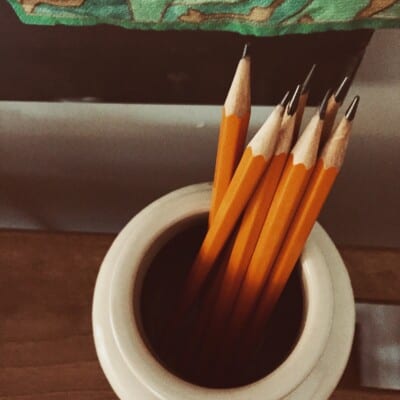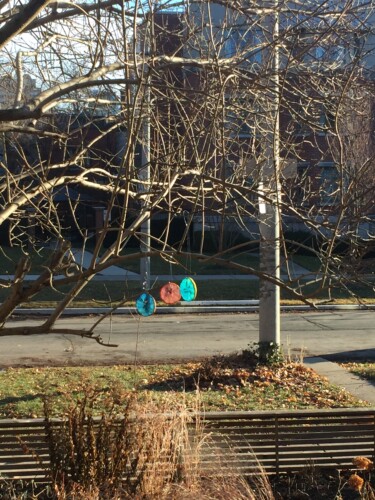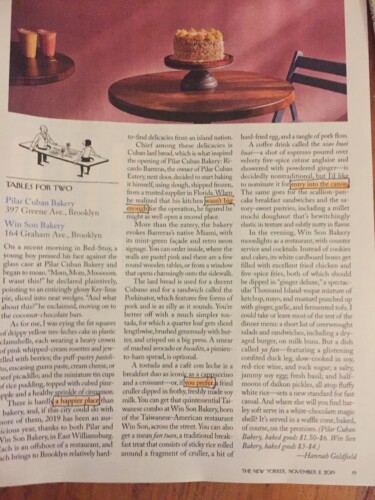One morning last November, the 22nd to be exact, I could feel the descent of winter come over me. It was that kind of grey that weighs down the soul and I realized that, ugh, this was just the beginning of months of days exactly like this, days to plod though for no reason other than some obligation to keep on plodding.
My depression, which I’ve experienced in bouts of varying severity since my mid-twenties, isn’t explicitly associated with winter. I’d already been feeling depressed for several months this year when winter arrived, threatening to extinguish whatever ember of resolve still smoldered. As the days grew shorter, I found myself so fatigued that I could have slept for sixteen hours a day. Sometimes I did. Antidepressants didn’t seem to be alleviating it. I was going to have to augment my usual strategies this winter in order to get through it.
If you are, like me, not much of a joiner, an introvert at the best of times, you know that in this depressed state the idea of engaging with people just makes you feel worse. Despite all well-meaning suggestions, you are not going to join a gym, club, or choir, take a class, get a job where you are surrounded by colleagues, call up old friends or make overtures toward new ones.
That morning, I was spreading Marmite on toast, Marmite being a salty yeast-extract spread, a decidedly acquired taste—a holdover from my English childhood. “Boost your bangers,” was written on the label along with a little illustration of sausages. I laughed out loud and snapped a picture of it, posting it to Instagram.
It is hard to speak about depression and ways of dealing with it without resorting to cliché. The battle, the journey, the motivational quotes and the like. How do you speak about and capture your particular experience? What if I could find one thing to boost my bangers every day by re-framing one ordinary object, image or experience and finding the humour, charm, absurdity or metaphor in it?
I made a commitment that morning to do this for the roughly one hundred remaining days of winter; posting one image and accompanying text each day. It was a way to play; by finding the relationships between images and text, I could fixate on something other than the darkness.
By the ordinary object, I mean making use of what’s at hand – the stuff in your fridge, the unmatched socks on top of the dryer, a tree on your street, a building in your city, a local grocery store, a body part, your cat. Take a photo of something in your immediate environment, then think about what draws you to it, what it might represent metaphorically. Or stage a photo in order to say something. Make something. But above all, keep it simple.
Here are some examples.

Exercise #7: Getting to the point when there isn’t one. Sharpen all your pencils.
Why? Because some days you feel you can accomplish nothing. But I bet you can do this. Freud said something like the key to life was being able to achieve short-term manageable goals. This is achievable and the results are not only visually pleasing, but useful.

Depression Exercise 17: Free your monopoly creatures.
Why? Because when everything feels dead you can give life. Particularly to the creatures in your midst who demand nothing of you. Free them from their boxes and imagine the lives they might lead.

Depression Exercise #23: Pretend you are mermaid/merman/merperson.
Why? Because the winter is cold and dark and unlike everyone else on Instagram, you are not on holiday somewhere south and sunny. But you could be somewhere better—in a colourful warm bath flapping your tail at sea creatures.

Depression Exercise #43: Slice, colour, winter morning’s light.
Why? Because the winter sun is weak and there isn’t much in the way of bright colour. So you leave sliced lemons soaking in food colouring overnight and see what happens. Then you hang them in a tree so that they catch the light and intensify it and you watch people walk by the tree and laugh.
Here is the beauty of it: you don’t have to speak aloud and you don’t even have to leave your house. You can tell a story in this way when more traditional means seem out of reach. And you can publish pages of that story in a very immediate way, through social media, and discover that somebody out there, somebody you may or may not know, gets it. Maybe that someone you don’t know gradually becomes somebody you do through sharing what they have created in response. And maybe that response prompts you to go further.
After #67 exercises (as of January 28th), I see a kind of mutual encouragement happening between followers, a shared exchange of creative endeavor in different forms. Someone will offer a brilliant line of text to accompany one of the images. Or someone will take on the broader quest of looking differently at a landscape, finding beauty in its barrenness, and share that image. Or someone will offer an inspired interpretation of someone else’s art.

I now exchange found poems excavated from restaurant reviews in the New Yorker with someone. We discover wholly different poems within the same text.
Above all, I share the day to day with a regular and growing number of people – both people I would not have otherwise been introduced to and people I know, but am coming to know differently. It feels like some of us are keeping each other company through this grisly season. My days are enriched by the experience, enlivened as a consequence. I am looking up and out.
Camilla Gibb is the author of four novels and most recently, a memoir, ‘This Is Happy’. Follow her “Depression Exercises” on Instagram: @camilla_gibb.




 Follow Us On Instagram
Follow Us On Instagram
